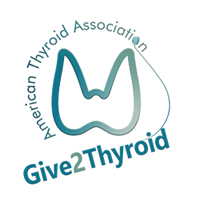The outcomes studied were treatment failure – meaning that hyperthyroidism persisted and a patient required another dose of radioactive iodine therapy or anti-thyroid drugs, weight change at 1 year after successful treatment, the presence or development of Graves’ eye disease, and patient satisfaction. Outcomes were determined at 1 year after the first dose of radioactive iodine therapy and at a mean follow up of 6.7 years.
At one year after the first dose of radioactive iodine therapy, 76.6% of patients were hypothyroid, 17% remained hyperthyroid and 5.7% had normal thyroid function. After 6.7 years an additional 11% were hypothyroid after 2 or 3 doses. Patients who remained hyperthyroid were either receiving anti-thyroid drugs (2.3%) or had thyroid surgery (0.9%).
They found that patients who had higher thyroid hormone levels, higher levels of a specific antibody associated with Graves’ disease (TRAB) or were treated with anti-thyroid drugs after their dose of radioactive iodine therapy were more likely to fail their first dose of radioactive iodine therapy. But failure was not associated with other features such as age, sex, smoking. Weight change was analyzed in only 228 patients and 84% gained weight by 1 year after radioactive iodine therapy. This seemed to be dependent on thyroid hormone levels before radioactive iodine therapy and the absence of anti-thyroid drug treatment prior to radioactive iodine therapy, but was not clearly related to thyroid hormone levels after treatment. New eye disease developed in 45 patients after radioactive iodine therapy. Of these, 13 patients required treatment with glucocorticoid, 4 needed radiation to the orbits and 6 required surgery. Higher thyroid hormone levels prior to radioactive iodine therapy treatment were associated with the development of new eye disease although increased levels of TRAB was not. While smoking was associated with the presence of eye disease prior to radioactive iodine therapy, it did not seem to be associated with development of eye disease after radioactive iodine therapy. Only 175 patients responded to a questionnaire regarding patient satisfaction. Most were satisfied about receiving radioactive iodine therapy and about their well being in the year after radioactive iodine therapy. Overall, 79% said they would recommend to a friend although 53% were unhappy about their weight gain.
WHAT ARE THE IMPLICATIONS OF THIS STUDY?
This was a large study of patients who received radioactive iodine therapy for Graves’ disease and showed an overall favorable prognosis. While some patients will require more than one dose of radioactive iodine, by the end of the study over 97% were adequately treated by radioactive iodine therapy. Weight gain is common, but in this study was not measured against patients’ normal weight prior to the development of hyperthyroidism, which has previously been shown to be associated with weight gain after treatment. It appears there was little effect of radioactive iodine therapy on pre-existing Graves’ eye disease, although some will develop eye disease after radioactive iodine therapy. A majority of patients were satisfied with their treatment.
— Marjorie Safran, MD, FACE




